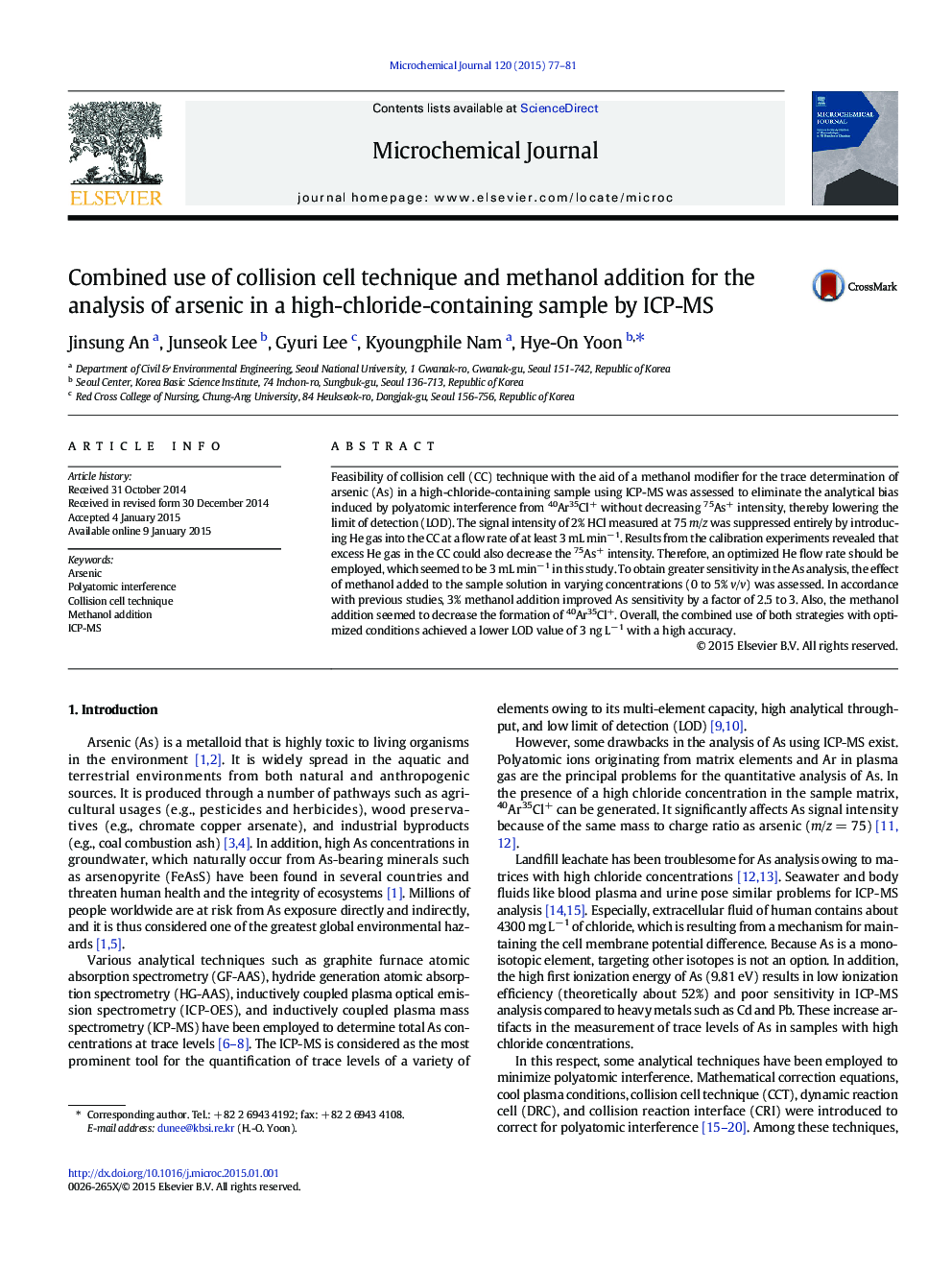| Article ID | Journal | Published Year | Pages | File Type |
|---|---|---|---|---|
| 1227715 | Microchemical Journal | 2015 | 5 Pages |
•The As concentration in a high-chloride-containing sample was analyzed using ICP-MS.•Interference from 40Ar35Cl+ was eliminated by the CCT with the He gas introduction.•Addition of 3% methanol (v/v) improved the As sensitivity by a factor of 2.5 to 3.•The methanol addition seemed to decrease the formation of 40Ar35Cl+ in the plasma.•Combination of CCT and methanol addition exhibited a lower LOD with a high accuracy.
Feasibility of collision cell (CC) technique with the aid of a methanol modifier for the trace determination of arsenic (As) in a high-chloride-containing sample using ICP-MS was assessed to eliminate the analytical bias induced by polyatomic interference from 40Ar35Cl+ without decreasing 75As+ intensity, thereby lowering the limit of detection (LOD). The signal intensity of 2% HCl measured at 75 m/z was suppressed entirely by introducing He gas into the CC at a flow rate of at least 3 mL min− 1. Results from the calibration experiments revealed that excess He gas in the CC could also decrease the 75As+ intensity. Therefore, an optimized He flow rate should be employed, which seemed to be 3 mL min− 1 in this study. To obtain greater sensitivity in the As analysis, the effect of methanol added to the sample solution in varying concentrations (0 to 5% v/v) was assessed. In accordance with previous studies, 3% methanol addition improved As sensitivity by a factor of 2.5 to 3. Also, the methanol addition seemed to decrease the formation of 40Ar35Cl+. Overall, the combined use of both strategies with optimized conditions achieved a lower LOD value of 3 ng L− 1 with a high accuracy.
